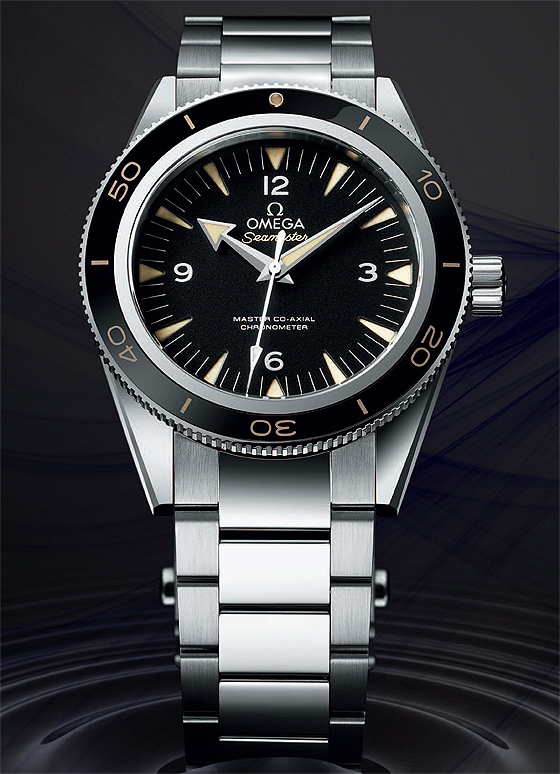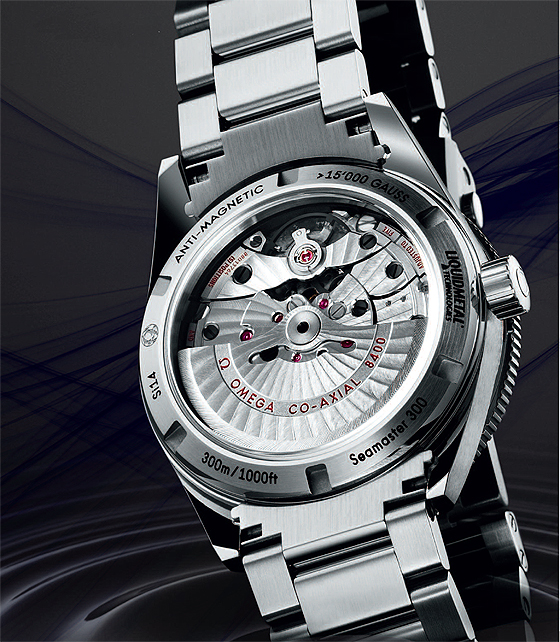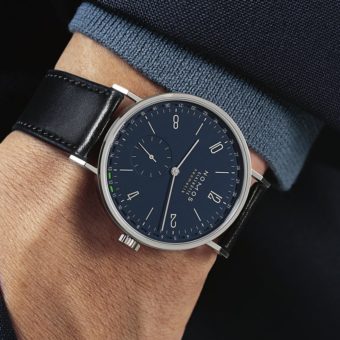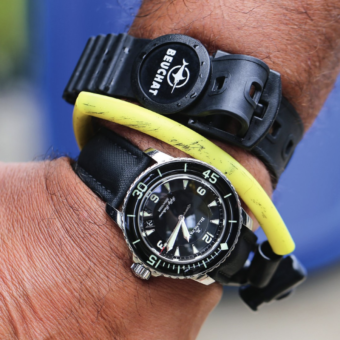We test the retro-styled Omega Seamaster 300, equipped to fend off powerful magnetic fields. With exiciting original photography of the watch by Nik Schölzel.
With the introduction of its new antimagnetic technology in 2013, Omega set a new standard in the fight against the effects of magnetic fields on a watch movement. The concept debuted in the Seamaster Aqua Terra >15,000 Gauss. At the launch, Omega announced its intention to incorporate the technology into all watches equipped with co-axial escapements. Our test watch, the Seamaster 300, which was introduced last year, is among those models. On the outside, the Seamaster 300 is a near replica of a 1957 model, with the same beige, wedge-shaped indexes, numeral font, hand style and bezel design. The slightly curved case is also true to the original. The words on the dial – “Master Co-Axial Chronometer” – are new, however, and they define the technology inside. “Chronometer” means the watch has been certified by the inde- pendent COSC chronometer-testing authority, attesting to its precision and performance. “Co-Axial” refers to the co-axial escapement of the manufacture movement. “Master” refers to Omega’s meeting the challenges posed by magnetic fields to a degree never before seen in a serially manufactured watch. (Omega has announced that later this year it will start using a new certification system for its antimagnetic watches, replacing COSC certification. For more on Omega’s certification, click here.

Magnetic fields are routinely encountered in daily life whenever we are in the vicinity of loudspeakers, headphones, induction stoves, electric motors or cell- phones. Magnets are used to attach pro- tective covers to iPads and other electronic devices, and should you require an MRI, don’t wear your watch. MRI scanners generate the strongest magnetic fields, with intensities of about 15,000 gauss, and occasionally as high as 30,000 gauss (“gauss” is the unit of measure used to denote the density of magnetic fields, named for the German physicist Carl Friedrich Gauss). These magnetic fields are the enemy of accurate timekeeping. Watchmakers often report that time- pieces they have received for repair must be demagnetized before they can be set to keep time again accurately. The conventional method of protect- ing watches from magnetic fields involves covering the movement with an inner case made of soft iron. This approach, however, rules out the inclusion of a date window or a display back, and it only protects the watch from magnetic fields up to 1,000 gauss. Omega claims its new movements can cope with magnetic fields of 15 times that intensity, to 15,000 gauss. Even stronger fields are conceivable, says Omega, but so far there is no way to test a watch under such intense magnetism.

Instead of enclosing the movement in a magnetic-resistant inner case, Omega uses antimagnetic materials to build the movement itself. All moving components, including the balance wheel, balance spring, pallets and escape wheel are made of materials that resist the force of magnetic fields. The balance spring is made of silicon, which is true of all Omega manufacture calibers made since 2008. The balance wheel is titanium, with gold screws. Bridges and wheels are made of conventional brass, a copper-based alloy that does not react to magnetism. Staffs and pivots are made of Nivagauss, an antimagnetic alloy developed by Nivarox, one of Omega’s sister companies in the Swatch Group. The steel plates that were formerly used in the co-axial escapement have been replaced by antimagnetic plates, and the springs for the shock absorbers are also made from materials that are resistant to magnetic fields.
Click here to download our full test of the Omega Seamaster 300, including complete specs, scores and prices, for just $2.99 from the WatchTime online store.






